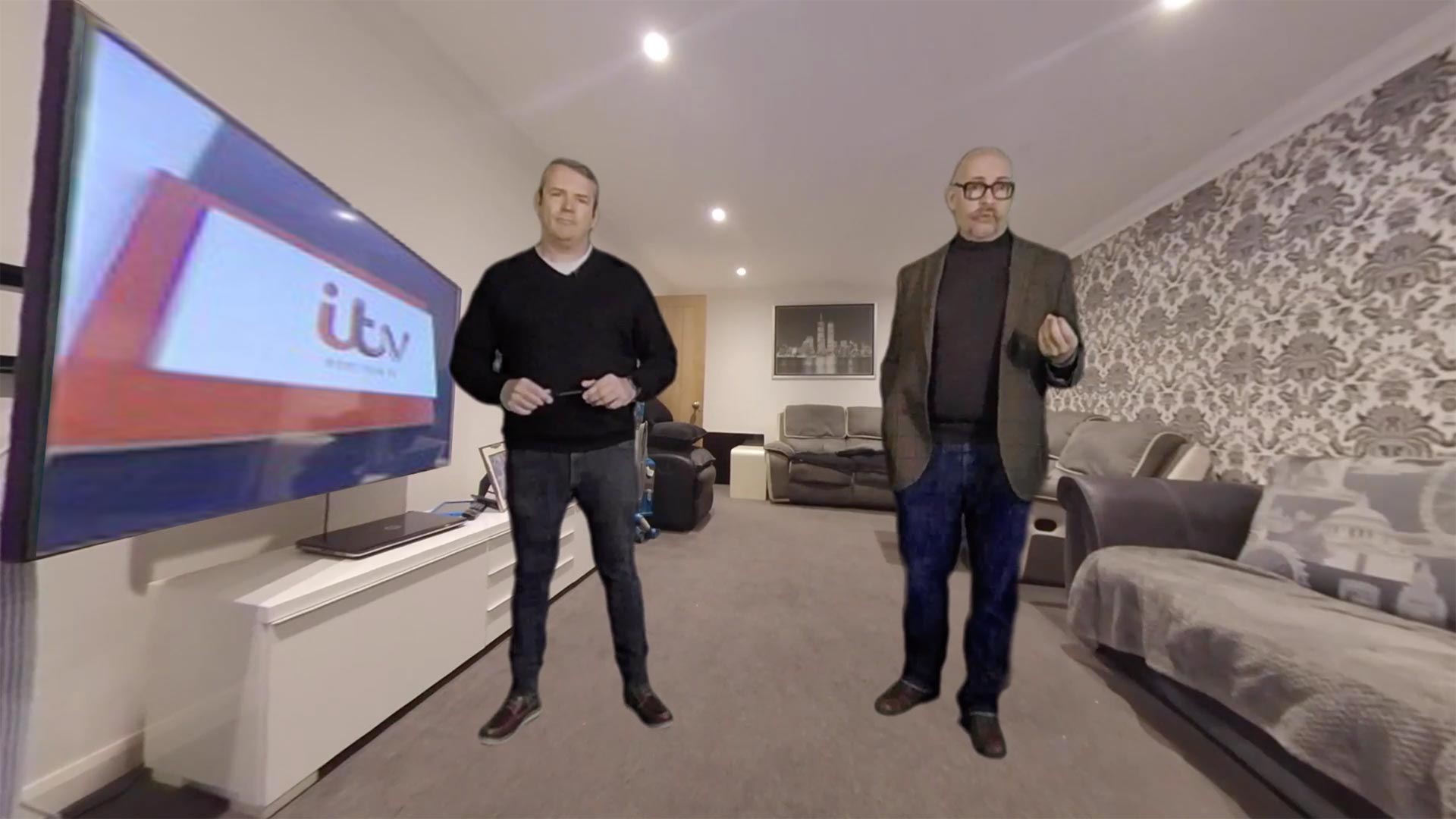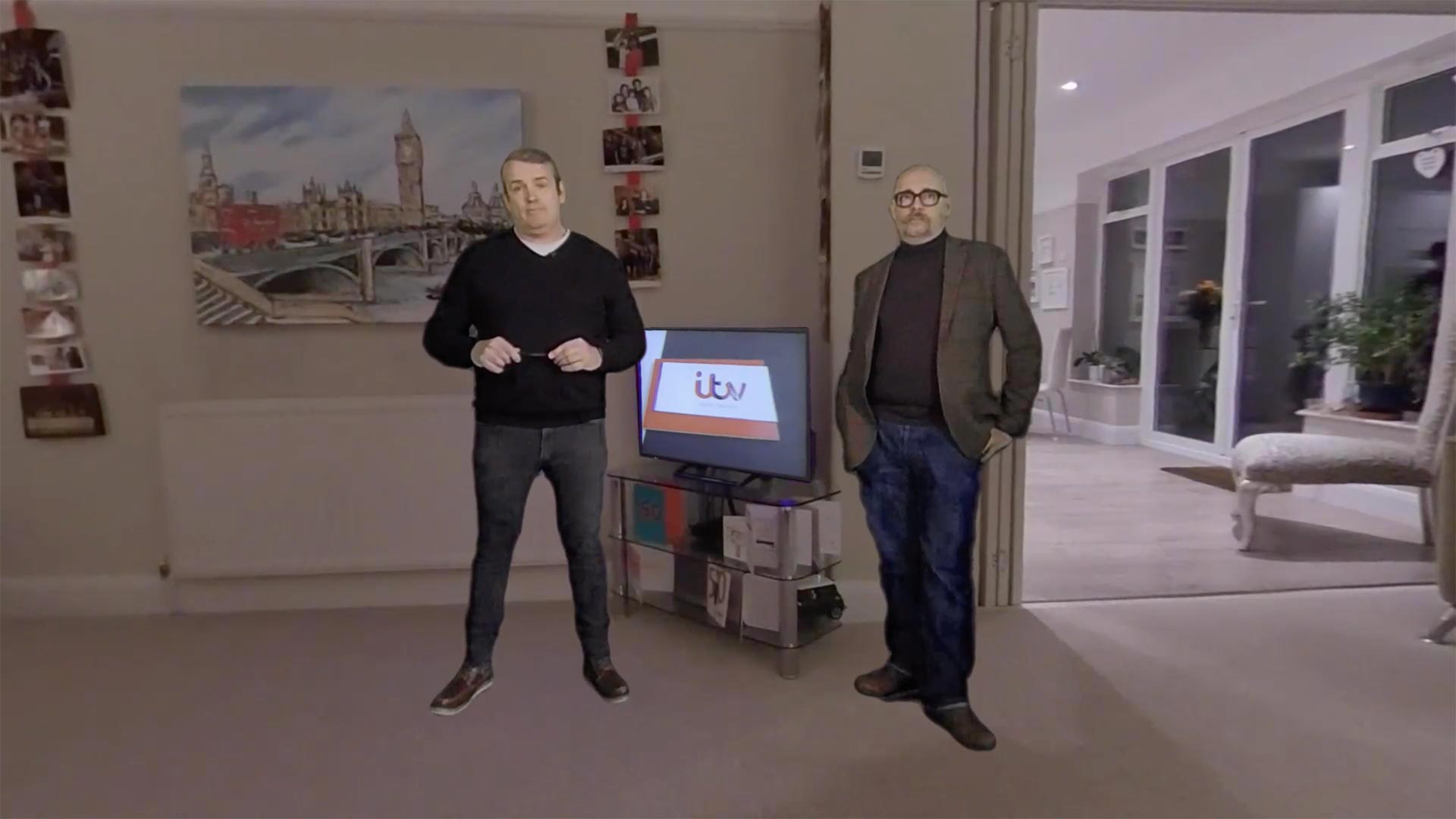VR ethnography to close the empathy gap in TV programming
ITV used virtual reality (VR) in consumer research to reduce the empathy gap between TV programmers and their target audiences. Results from this study created rich insight into TV viewing behaviours and, as a direct result, changed TV programming to improve audience engagement.


Research challenge
ITV (the largest and most popular commercial television channel in the UK) wanted to get closer to their audience by experiencing what it’s like to watch television alongside ITV viewers. They wanted to uncover new insights into how ITV programmes were appreciated, how people consumed TV content and the role of TV in UK households.
Virtual reality solution
Why use VR? If you have used a VR headset, you’ll know VR has the unique ability to make you feel like you are somewhere you are not. This is due to two key illusions. The first is the place illusion – does the virtual experience look realistic? The second is the plausibility illusion – does the world react as you would expect it to? This means if you move your head, you can look around the room just as if you were sitting there.
The other thing VR can do, and what was key to this project, is its ability to allow you to see the world from another’s perspective. This can make you feel empathy with those you are with. By using VR, it allows you to feel what it is like to be part of a group, to understand the group dynamics, feel part of the conversations people are having and feel what the group is feeling. In the pilot we did to test our methods, we showed films like these to others and as one respondent said, “I felt how they felt”.


Method
Virtual reality equipment was installed in TV viewer’s homes with 64 households recruited across the country and a total of 140 people inviting us into their homes to watch TV shows with them. They kept the cameras for up to a week and filmed whole evenings viewing including the ITV programme we were interested in. This way we got real insight into their viewing lives, both programmes and ad watching.
After reviewing hundreds of hours of footage we were able to observe that the programmes were being used by the group as a conversation tool that helped them renew and re-enforce social bonds. Think of it as the TV being a member of the family. One that challenges, prompts, encourages, and stimulates the family to bond together. We wanted to delve deeper into the social interactions and bonds in the lounge, how the programme can deliver, enhance, and create these moments for our viewers. Our objective was to see if this could lead to changes in the way we think about editorial aspects and of course how we promote and schedule programmes.
Research results
We built an overall framework with 5 main categories of comments and behaviours were identified where programmes were being used for social equity.
Firstly, there was Emoting. This is where the group who are watching the TV express the same emotions as each other. This could be anything such as surprise, disgust, sadness, and laughter.
The next way in which TV was turned into social equity was Judging. This could be judging people’s appearance, acting performances or even the productions themselves.
The third behaviour was what we termed Springboarding. Even though we may think we have exhausted every topic of conversation through the day, the desire to bond and communicate is still strong. TV programmes stimulated groups to ask questions and share ideas.
A frequent behaviour seen whilst watching TV was Predicting. People loved guessing what would happen in a drama, how someone would react to something in a factual entertainment show, who would win a challenge in I’m a Celebrity, who would leave a talent show or the Love Island villa.
As mentioned earlier, using VR was a great way to feel empathy with ITV viewers. And Empathy also proved to be a significant factor in prompting social interactions in the front room. Viewers would often feel empathy for those on screen and socially bond over those empathetic feelings.
This insight has allowed ITV to see first-hand and in context how their audience views their programming. It showed them what each genre or even specific programme provides in terms of social equity; opportunities to discuss, judge, empathise, predict, emote and springboard from the programming.


Business impact
The research conducted has prompted questions for ITV to improve their output for their audience.
Do programmes that get translated into the same kinds of social equity impact on each other; should a show that prompts predicting be followed by one that prompts the same?
Are programmes that prompt more kinds of social equity more engaging than those that prompt one or two kinds?
How much content that prompts translation into social equity should be in a programme?
Are there fashions for programmes to be changed into certain kinds of social equity?
Is the fashion for talent programmes that prompt ‘judging’ coming to an end? Is there a need for more programmes that prompt ‘empathy’?
